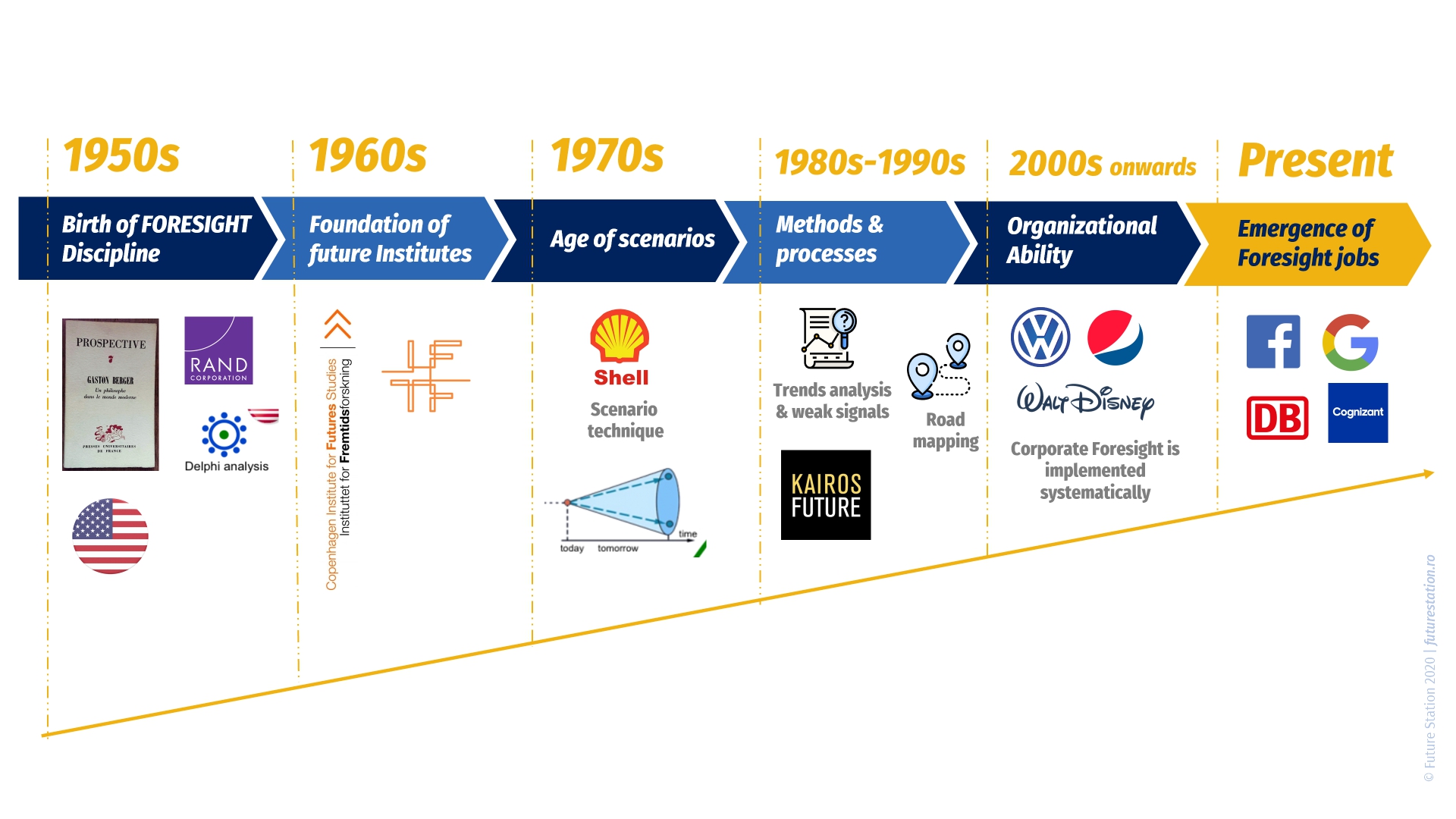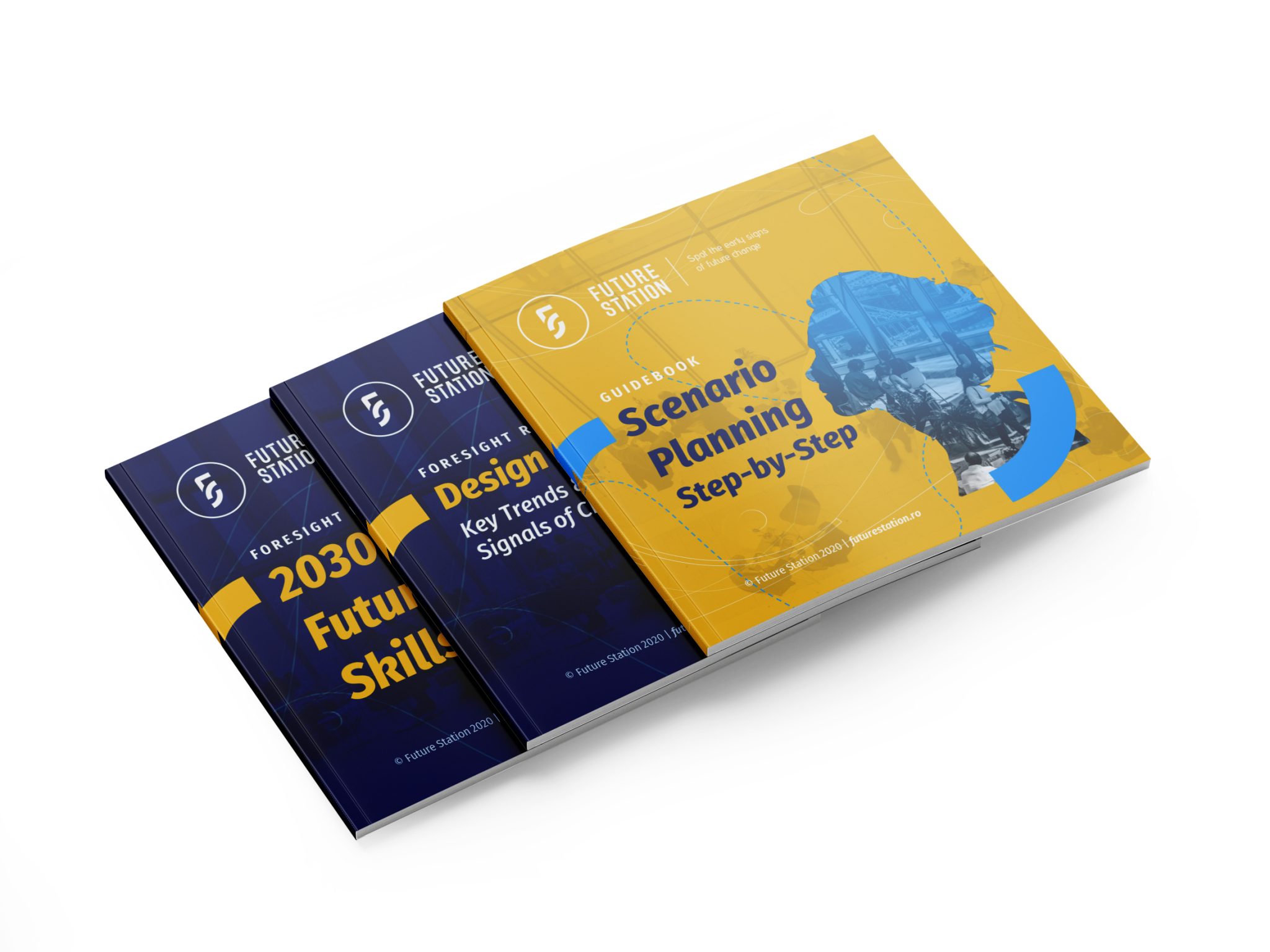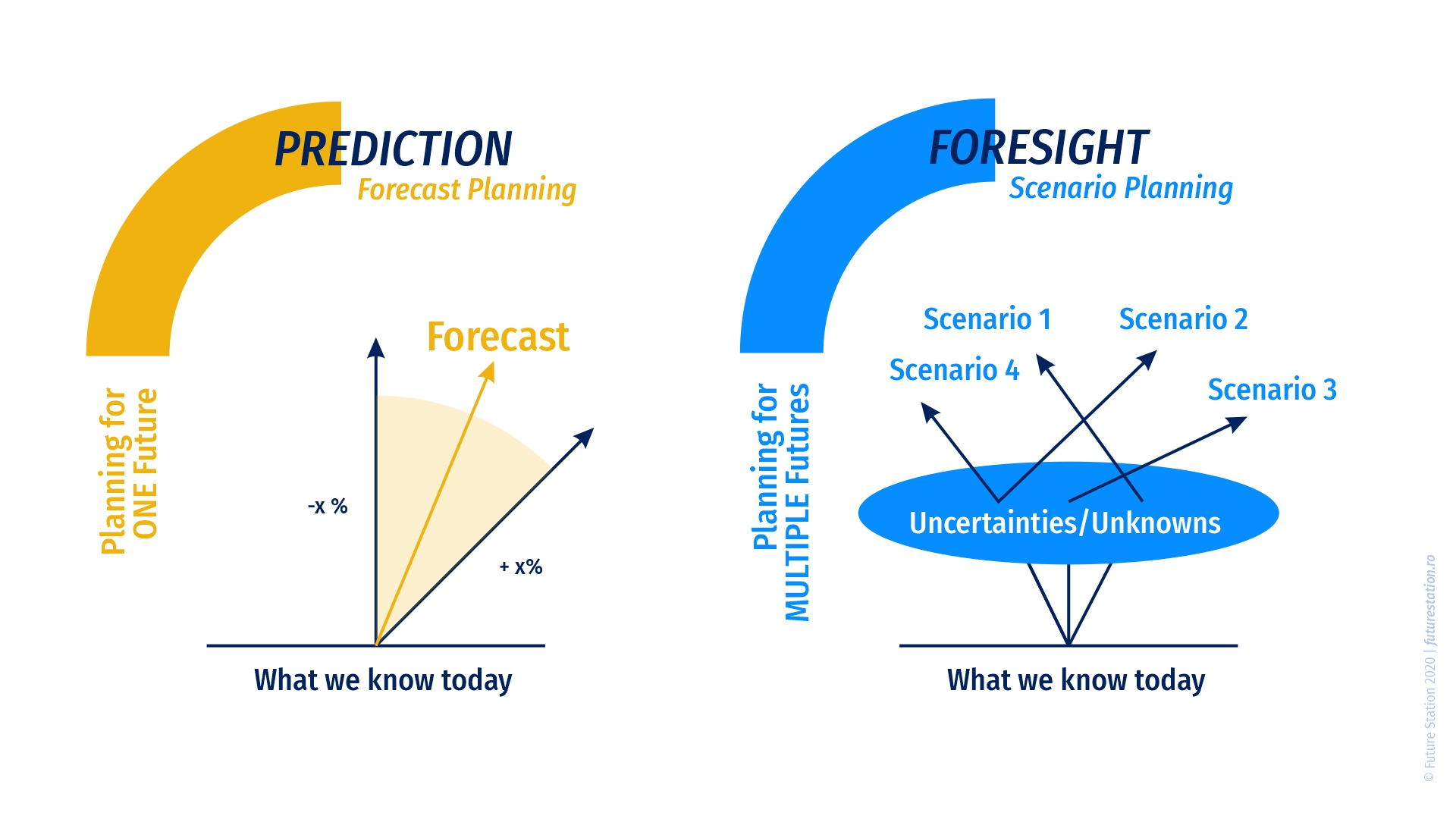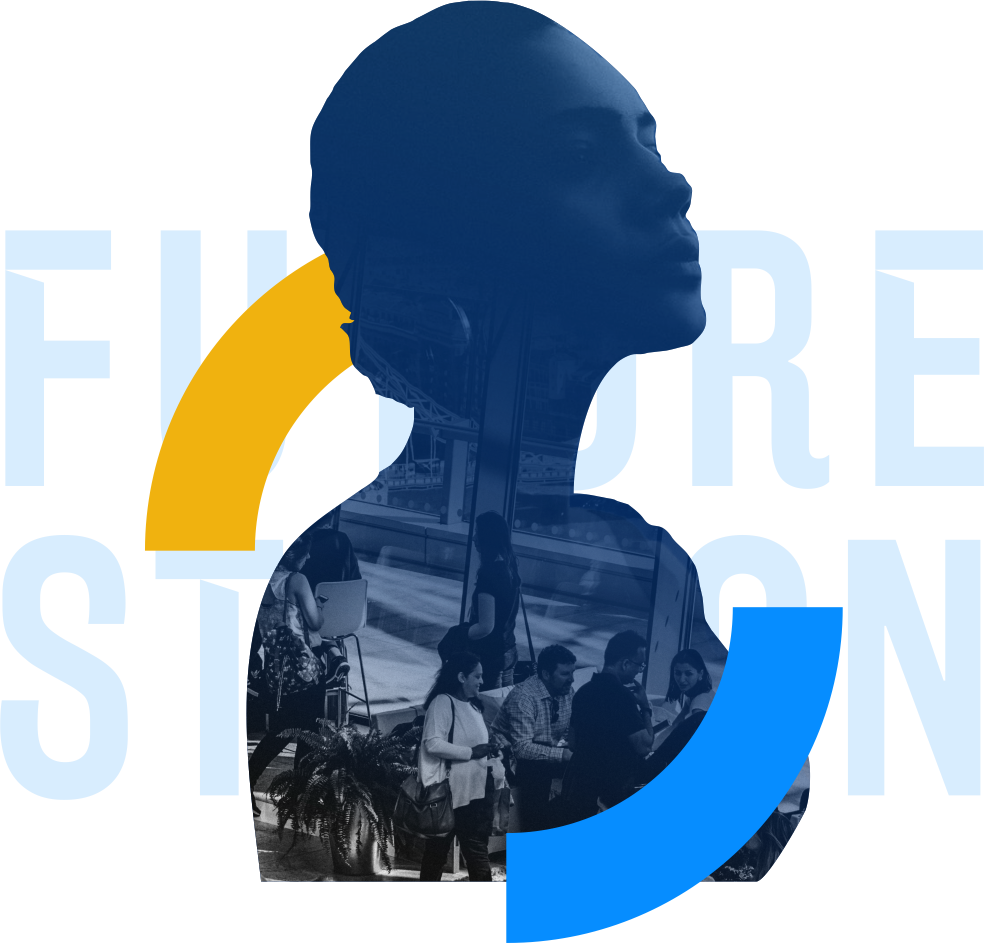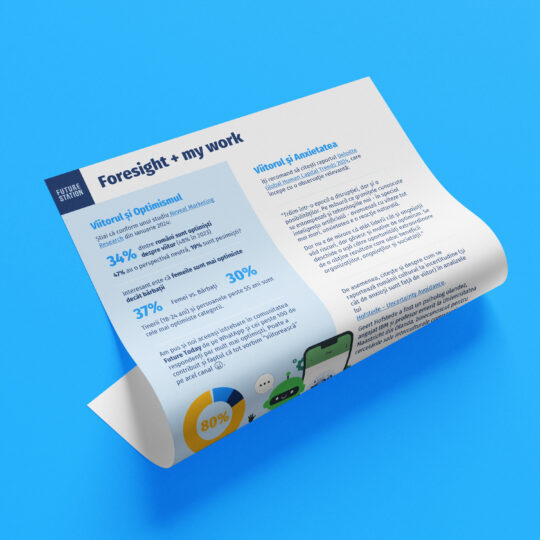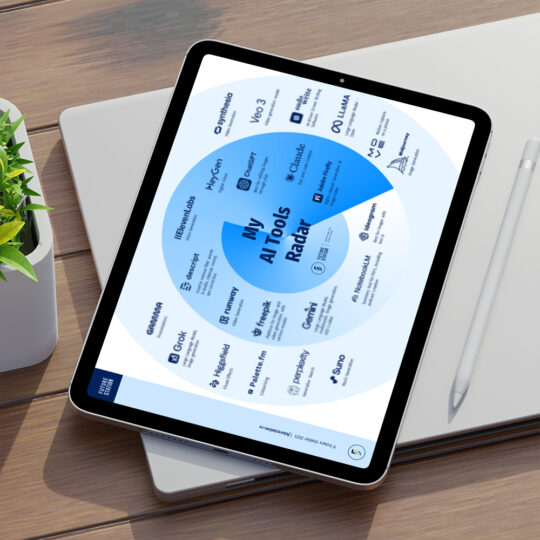Developing strategies through foresight could be complimentary to other traditional strategy planning tools. Important is to not underestimate uncertainty!
The level of uncertainty is company-specific and depends on factors such as: level of preparedness, access to proprietary info, but also strategic positioning: is the company mindset towards adapting to the future or more towards actively shaping the future? Gretzky, a major hockey player, said: “A good hockey player plays where the puck is. A great hockey player plays where the puck is going to be.” Thus, it also depends on where companies want to “play”.
The concept of Foresight emerged after World War II as an approach for military planning. Aware of the fact that the enemy can attack from various places and in different ways, they were building scenarios and related strategic responses.
